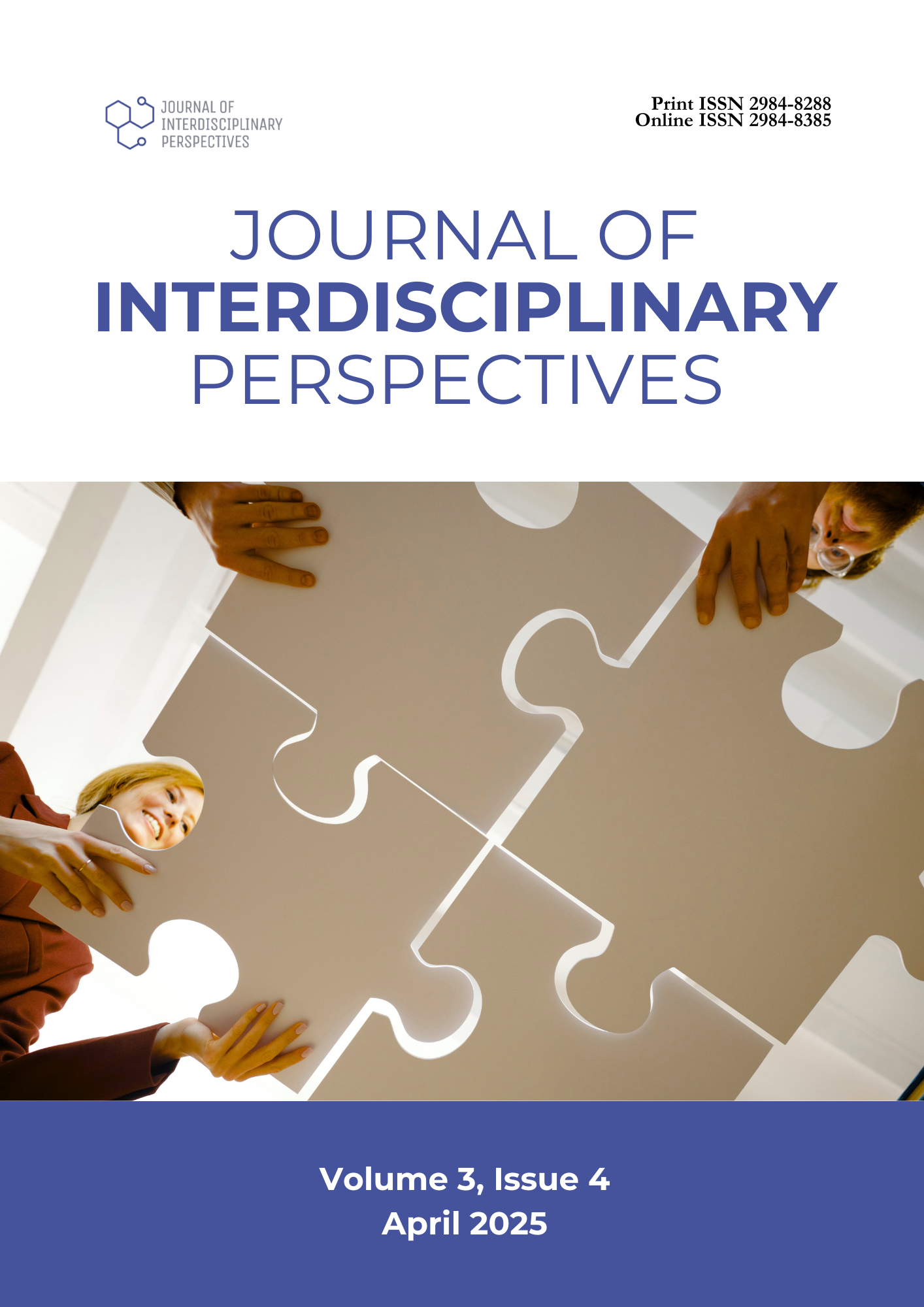Harnessing Community-Based Aquaculture for the Sustainable Development of Small Scale Fishery
DOI:
https://doi.org/10.69569/jip.2024.0663Keywords:
Community-based aquaculture, Small-scale fisheries, Seaweed, Sustainable development, Well- beingAbstract
This study examines how the principles of sustainable development can be realistically applied to community-based aquaculture in small-scale fisheries. Using the case of the Simbuco Aqua-Marine Multi- Purpose Cooperative (SAMMPC) in Kolambugan, Lanao del Norte, this research explores the socio- economic and ecological dimensions of aquaculture activities and their broader implications for sustainability in small-scale fisheries. The study is framed within key Sustainable Development Goals (SDGs), particularly SDG 14 (Life Below Water) and SDG 8 (Decent Work and Economic Growth), highlighting how SAMMPC’s initiatives align with global sustainability efforts. A mixed-methods approach was employed, integrating quantitative surveys with qualitative key informant interviews (KII) and focus group discussions (FGD). Findings indicate that SAMMPC has significantly improved members’ livelihoods through diversified income streams, enhanced credit access, and strengthened social cohesion. Notably, the cooperative fosters inclusivity by promoting women’s participation in aquaculture, contributing to SDG 5 (Gender Equality). However, challenges such as environmental degradation, resource depletion, and market instability highlight the complexities of balancing economic growth with ecological sustainability. While SAMMPC serves as a model for cooperative-based aquaculture, the study underscores the broader need for sustainable practices across small-scale fisheries. The research advocates for biodiversity-friendly aquaculture methods, climate-adaptive strategies, and improved waste management systems to mitigate environmental risks. By integrating these approaches and fostering multi-stakeholder partnerships, community-based aquaculture can be a viable pathway for sustainable development, ensuring both economic viability and ecological resilience.
Downloads
References
Agbayani, R. F. (2008). Community-based aquaculture and resource management: Concepts and approaches. Retrieved from https://repository.seafdec.org/handle/20.500.12066/4652 Ateweberhan, M., Hudson, J., Rougier, A., Jiddawi, N. S., Msuya, F. E., Stead, S. M., & Harris, A. (2018). Community-based aquaculture in the western Indian Ocean: Challenges and
opportunities for developing sustainable coastal livelihoods. Ecology and Society, 23(4). https://doi.org/10.5751/ES-10411-230417
Braun, V., & Clarke, V. (2006). Using thematic analysis in psychology. Qualitative Research in Psychology, 3(2), 77–101. https://doi.org/10.1191/1478088706qp063oa
Briones, R., Navarro, A., Ralph, M., Abrigo, M., Umlas, A., & Latigar, J. (2023). Rural Agro-Enterprise Partnership for Inclusive Development and Growth (RAPID-Growth) Project Baseline Survey. Retrieved from https://pidswebs.pids.gov.ph/CDN/document/pidsdps2339.pdf
Creswell, J. W., & Plano Clark, V. L. (2018). Designing and conducting mixed methods research (3rd ed.). Sage Publications.
Fabro, J. (2022). Economic potential of seaweed farming in rural coastal communities. Marine Economics Journal, 15(2), 102-118. https://doi.org/10.1016/mej.2022.03125
Fajardo, W. F. (2021). Fisherfolk marketing cooperatives: Empowered partners of the Bureau of Fisheries and Aquatic Resources (BFAR) towards fish sufficiency and food security.
Retrieved from https://tinyurl.com/26hse67c
FAO. (2022). The state of world fisheries and aquaculture 2022: Towards blue transformation. Retrieved from https://doi.org/10.4060/cc0461en
FAO. (2023). Voluntary guidelines for securing sustainable small-scale fisheries in the context of food security and poverty eradication. Retrieved from https://doi.org/10.4060/i4356en
Fondo, N., Franz, N., Gaibor, Y., Massey, L. M., Saavedra-Díaz, L. M., Salas, S., Arias Schreiber, M., Trouillet, B., Chuenpagdee, R., & Devillers, R. (2024). A methodological framework for capturing marine small-scale fisheries contributions to the Sustainable Development Goals. Sustainability Science, 19, 612–630. https://doi.org/10.1007/s11625-024-01470-0
Hill, N., Rowcliffe, J., Koldewey, H., & Milner‐Gulland, E. (2011). The interaction between seaweed farming as an alternative occupation and fisher numbers in the Central Philippines.
Conservation Biology, 26(2), 324-334. https://doi.org/10.1111/j.1523-1739.2011.01796.x
Jimenez, C. R., & Digal, L. N. (2019). Impact of cooperative membership on household welfare: Evidence from calamansi farmers in Oriental Mindoro, Philippines. Journal Article, 5464. https://www.ukdr.uplb.edu.ph/journal-articles/5464
Jimenez, J. M., Tagaro, S. J., Tabotabo, J. E., Catingub, J. L., & Dacayana-Alvarez, C. M. (2018). Lead contamination in the waters of the Port of Mukas, Kolambugan, Philippines. Journal of Multidisciplinary Studies, 7(1), 159–170. https://doi.org/10.7828/jmds.v7i1.1250
Macalisang, J. S., Balangao, J. K. B., & Logronio, F. V. (2024). Environmental assessment in Panguil and Iligan Bay, Philippines: Review and future perspectives. Journal of Environmental Nanotechnology, 13(3), 188–196. https://doi.org/10.13074/jent.2024.09.243888
Mengo, E., Grilli, G., Murray, J. M., Capuzzo, E., Eisma-Osorio, R. L., Fronkova, L., Etcuban, J. O., Ferrater-Gimena, J. A., & Tan, A. (2023). Seaweed aquaculture through the lens of gender: Participation, roles, pay and empowerment in Bantayan, Philippines. Journal of Rural Studies, 100. https://doi.org/10.1016/j.jrurstud.2023.103025
Orbita, M. L. S. (2013). Growth rate and carrageenan yield of Kappaphycus alvarezii (Rhodophyta, Gigartinales) cultivated in Kolambugan, Lanao del Norte, Mindanao, Philippines. AAB Bioflux, 5(2), 128-139.
Philippine Statistics Authority. (2022). Fisheries Situationer. Retrieved from https://psa.gov.ph/statistics/fisheries-situationer
Weeratunge, N., Béné, C., Siriwardane, R., Charles, A., Johnson, D., Allison, E., & Badjeck, M. (2013). Small‐scale fisheries through the wellbeing lens. Fish and Fisheries, 15(2), 255-279. https://doi.org/10.1111/faf.12016
Downloads
Published
How to Cite
Issue
Section
License
Copyright (c) 2025 Journal of Interdisciplinary Perspectives

This work is licensed under a Creative Commons Attribution-NonCommercial 4.0 International License.








